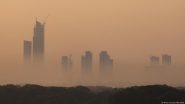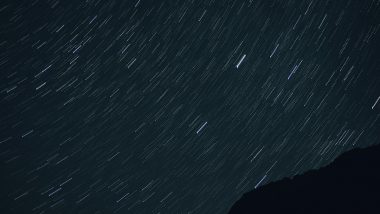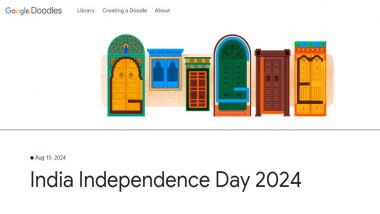The annual meteor shower that lights up the sky every December is set to peak on the 13th and 14th of this month and Google has marked it with a creative slide show.
The Google Doodle marks the meteor shower in a series of slides that explain how the Earth is witness to this celestial show every year.
The first slide starts with the Sun as it is the cause of us Earthlings witnessing this annual event. The second slide shows various planets and celestial bodies orbiting the Sun. Every year the 3200 Phaethon asteroid’s orbit brings it closer to the Sun than even the planet Mercury. The second slide depicts the asteroid dissecting Mercury’s orbit as it loops around the Sun. Due to the intense heat, some part of the asteroid fragments and leaves a trail behind it. The third slide shows this fragmentation and the fourth slide the creation of the trail of asteroid rocks which falls in the Earth’s orbit. Around December, the Earth crosses through this trail of debris which is depicted in the fifth slide. As the debris crashes into Earth’s atmosphere, we see what are meteor showers.
The sixth and seventh slides show that the debris seems to originate near the Gemini constellation from which it gains its name the Geminid showers.
The Geminid meteor showers at its peak produce 120 "shooting stars" per hour in a dark-sky location. These showers are visible by the naked eye between December 4- 16th but peak around December 13-14.
To see these, head to a location that is far away from city lights and light pollution post 9pm and look south-west. The Geminids are known for their brightness and some even produce tails like a comet when they streak across the sky.
(The above story first appeared on LatestLY on Dec 13, 2018 04:41 AM IST. For more news and updates on politics, world, sports, entertainment and lifestyle, log on to our website latestly.com).













 Quickly
Quickly





















